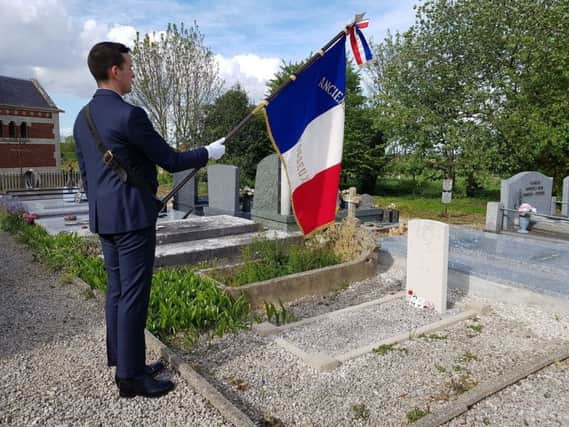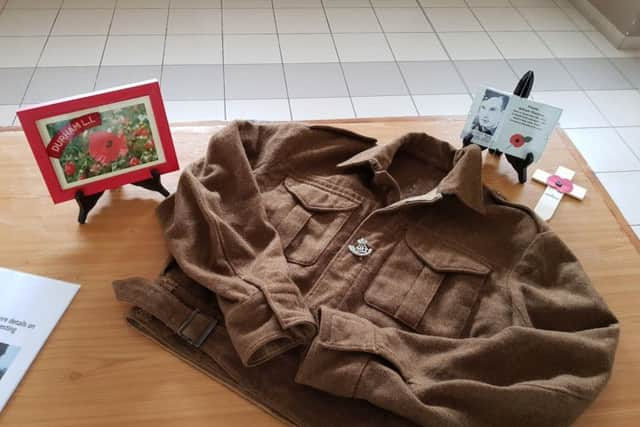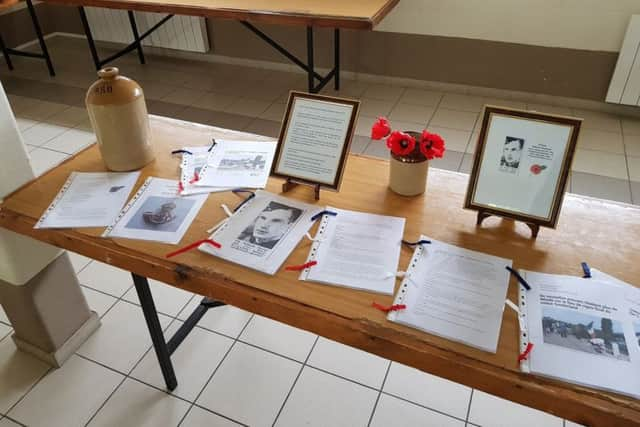They shall never forget - a French tribute to the Sunderland soldier who died in their village


And this year’s ceremony was even more poignant as new information came to light about Private William ‘Willie’ Thomson, of 11th Battalion Durham Light Infantry, who was wounded by machine-gun fire at Fosseux in France.
He was injured in May 1940, and died soon afterwards.


But the man with links to Deptford has never been forgotten by the people in Fosseux which lies south west of Arras.
Advertisement
Hide AdAdvertisement
Hide AdDespite there only being around 140 residents in the tiny community (according to online statistics), locals have always remembered the Englishman.
Regine Verguier is the person who spearheaded a bid to find out more about ‘Willie’ and she appealed for the Sunderland Echo’s help.
We duly obliged with a full-page feature last December which included a bid to find out more about the Wearside man.


It yielded more information and Regine said: “The inhabitants might finally who William Thomson was.”
Advertisement
Hide AdAdvertisement
Hide AdShe praised the Sunderland Echo and said Willie was buried in the village cemetery, in accordance with his final wishes, and his Commonwealth War Grave (CWGC) - the only one at the site - is still carefully tended by locals.
“Thank you for your article in December and your interest for my research,” said Regine.
Information according to old people of Fosseux, showed that William Thomson has been buried first at the place where he fell. Then, after the liberation, he was buried in the Communal Cemetery.
Regine said: “He was buried in the village cemetery, in accordance with his final wishes, and his Commonwealth War Grave (CWGC) – the only one at the site – is still carefully tended by locals.”
Advertisement
Hide AdAdvertisement
Hide AdThis year’s ceremony was held “in front of the war memorial was cut short as it was raining,” said Regine.
“During his speech in the hall, the Mayor introduced the exhibition and invited people to view the Sunderland Echo articles. People were surprised by my research.”
But there was even more to come on a day of remarkable commemoration. Regine added: “I learned an anectode: A lady who must be 87 or 88-years-old remembers that day.
“His uncle, who lived at Gouy-en-Artois, had come to Fosseux to have lunch with his parents. She was a teenager.
Advertisement
Hide AdAdvertisement
Hide Ad“His uncle, who was driving a cart with a horse, had said that he had said “hello” to a British soldier on the road to Gouy.
“When he later learned that this young soldier had been killed, the uncle was very moved and sad.”
Regine also told us more about the rest of the day’s ceremony this year. “In the afternoon, the rain stopped. We went, with the flag bearer, on the stele (stone slab) of William Thomson to deposit, as every May 8 and November 11, a cross of memory.
“This time, I added, with emotion, the small frame with his photo.”
Advertisement
Hide AdAdvertisement
Hide AdThe photograph was adorned with a poppy in a poignant ceremony of love.
William was the son of Margaret Bell and William Thomson who were married in Deptford, Sunderland District, on December 21, 1917. Research does show that William lived with his family in Deptford Terrace for many years.
No mention of other siblings is made in archive documents, but he is known to have had two cousins – Charlie and Margaret Warburton, who lived close by.
A previous Wearside Echoes story told how he was part of a labour division which was sent to France to build airfields. The men were not there to fight, but ended up right on the front line.
Advertisement
Hide AdAdvertisement
Hide AdAnd when German armoured columns attacked the 70th Brigade in Mercatel and Ficheux on May 20, 1940, dozens of the ill-equipped labourers lost their lives.
It appears Willie was left on his own, but he did try to get back to British lines when he was shot.
Private Thomson’s search for his comrades led him to the outskirts of Fosseux a day after the attack, and that is where a villager spotted him seeking cover from an approaching enemy column.
Tragically, just minutes later, Willie was wounded by machine-gun fire – shot from what was probably a German reconnaissance motorcycle combination.